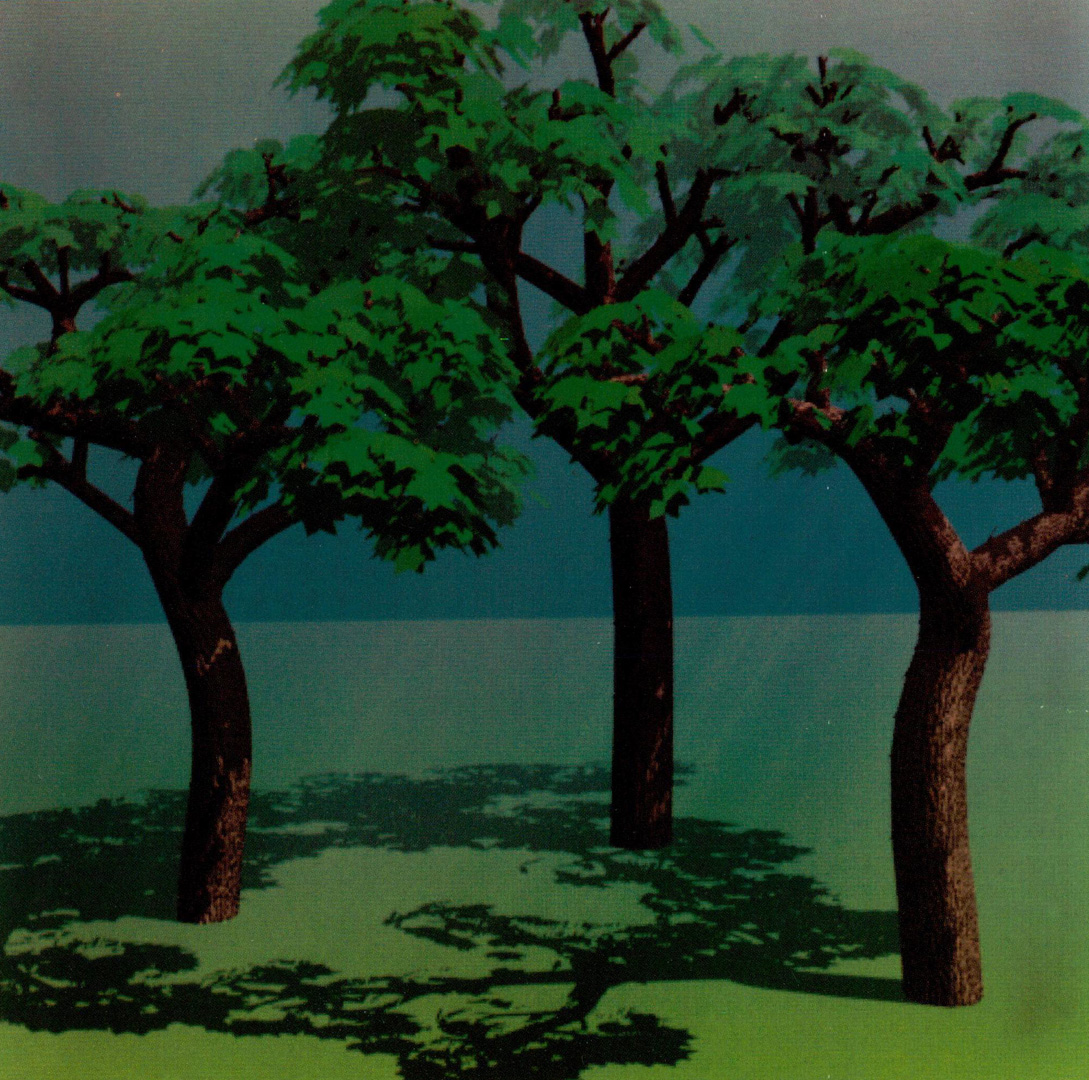“Atmospheric illumination and shadows” by Max
Conference:
Type(s):
Title:
- Atmospheric illumination and shadows
Presenter(s)/Author(s):
Abstract:
The shadow volume algorithm of Frank Crow was reorganized to provide information on the regions of illuminated space in front of each visible surface. This information is used to calculate the extra intensity due to atmospheric scattering, so when the atmosphere is partly in shadow, columns of scattered light will be visible. For efficiency in sorting the shadow edges, the image is computed in polar coordinates.
References:
1. Williams, Lance, “‘Casting Curved Shadows on Curved Surfaces,” SIGGRAFH “78 proceedings, pp. 270-274.
2. Atherton, Peter, Weiler, Kevin, and Greenberg, Donald, “Polygon Shadow Generation,” SIGGRAPH ’78 proceedings, pp. 275-281.
3. Crow, Franklin, “Shadow Algorithms for Computer Graphics,” SIGGRAPH ’77 proceedings, pp. 242-248.
4. Nishita, Tomoyuki, Okamura, Isao, and Nakamae, Eihachiro, “Shading Models for Point and Linear Sources,” ACM Transactions on Graphics, Vol 4 no. 2 (1985), pp. 124-146.
5. Bouknight, J., and Kelly, K., “‘An algorithm for producing halftone computer graphics presentations with shadows and movable light sources,” SJCC, AFIPS, Vol 36 (1970), pp. 1-10.
6. Whirred, Turner “An Improved Illumination Model for Shaded Display,” Communications of the ACM, Vol 23 (1980), pp. 343-349.
7. Cook, Robert, Porter, Thomas, and Carpenter, Loren, “‘Distributed Ray Tracing,” SIGGRAPH ’84 proceedings, pp. 137- 145.
8. Watkins, Gary, “‘A real-time visible surface algorithm,” Ph.D. Thesis, University of Utah (1970) UTECH-CSc-70-101.
9. Sproull, Robert, and Newman, William, “‘Principles of Interactive Computer Graphics” (first edition is better on this subject), McGraw Hill, New York (1973).
10. Rogers, David, “Procedural Elements for Computer Graphics,” McGraw Hill, New York (1985).
11. Blinn, James, “Light Reflection Functions for Simulation of Clouds and Dusty Surface,” SIGGRAPH ’82 proceedings, pp. 21-29.
12. Max, Nelson, “Light Diffusion through Clouds and Haze,” Computer Vision Graphics, and Image Processing, Vol 33 (I986), pp, 280-292.
13. Kajiya, James, and Von Herzen, Brian, “‘Ray Tracing Volume Densities,” SIGGRAPH ’84 proceedings, pp. 165-174.
14. Perlin, Ken, “State of the Art in Image Synthesis ’85 Course Notes,” ACM SIGGRAPH ’85, course 11.
15. Mortenson, Michael, “Geometric Modelling,” John Wiley and Sons, New York (1985).
16. Rogers, David, and Adams, J. A., “‘Mathematical Elements for Computer Graphics,” McGraw Hill, New York (1976).
17. Catmull, Ed, and Smith, Alvey Ray, “3-D Transformations of Images in Scanline Order,” SIGGRAPH ’80 proceedings, pp. 279-285.
18. Max, Nelson “Anti-Aliasing Scan Line Data” to be submitted to IEEE Computer Graphics and Applications.
19. Bloomenthal, Jules, “Modelling the Mighty Maple,” SIGGRAPH ’85 proceedings, pp. 305-311.
20. Max, Nelson, “Shadows for Bump Mapped Surfaces,” in Advanced Computer Graphics: Proceedings of Computer Graphics Tokyo “86, T. L. Kunii, ed., Springer Verlag, Tokyo (1986), pp. 145-156. To be revised and submitted to The Visual Computer.




